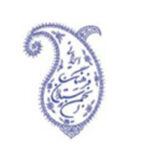Winter 2020 issue of Bahá’í Canada
 Soon after the bicentenary of the Birth of the Báb, the Universal House of Justice addressed the Bahá’ís of the world as “visible hosts of a movement that has proved itself irrepressible. Far from being merely a memorable event,” it continued, “the celebration of the bicentenary of the Birth of the Báb was the fruit of eight cycles of devoted effort, carried out in unity and with a sense of undaunted initiative.”[1]
Soon after the bicentenary of the Birth of the Báb, the Universal House of Justice addressed the Bahá’ís of the world as “visible hosts of a movement that has proved itself irrepressible. Far from being merely a memorable event,” it continued, “the celebration of the bicentenary of the Birth of the Báb was the fruit of eight cycles of devoted effort, carried out in unity and with a sense of undaunted initiative.”[1]
In this issue, we are delighted to share several stories of celebrations across the country, and the strides forward they represent as our community approaches the final year of the current Five Year Plan. We also took this opportunity to call to mind the life and Mission of the Báb, “the Primal Point” and “King of the Messengers.”
An excerpt from the book Leaves of the Twin Holy Trees, by Baharieh Rouhani Ma‘ani, provides insight into the Báb’s station through an account of His wife, Khadíjih Bagum, who found Him in the condition of divine Revelation and perceived a “dazzling light emanating from His Being.”
The article “A Twofold Mission: Some Distinctive Characteristics of the Person and Teachings of the Báb,” by Elham Afnan and originally published on the Bahá’í World website, serves to increase understanding of the Báb’s human and divine stations as well as the prominent themes of His Writings.
The feature piece of the issue, “Glimpses from the bicentenary,” is a selection of photos that, while by no means can represent the countless celebrations that took place across the country, serves to communicate the joy and diversity of these occasions. In November, we published a larger collection of bicentenary photos on bahaicanada.bahai.ca, which readers are invited to view if they have not already.
Since the last bicentenary, there seems to be a growing coherence between Holy Day celebrations and the community-building process. The article, “Strengthening the institute process from one bicentenary to another” chronicles how, through nurturing a steady stream of youth through the institute process, new friends took an active role in celebrating the bicentenary in their neighbourhood.
This was also demonstrated in the article “The spirit of the bicentenary moving on its own,” as Chayan Dehghan, a young homefront pioneer, relates how a celebration at a Native Friendship Centre in Fort Erie, Ont. took the form of a traditional Haudenosaunee Social.
Many creative expressions also paid homage to the Báb. Among them, a series of paintings from Montreal artist Lorraine Pritchard explores themes in the Writings of the Báb. One of these paintings, entitled Return to Green is featured on the cover of this issue. We also included a short article about the public exhibition of these paintings at the Beaux-arts des Ameriques Gallery in Montreal.
More than 10,000 people viewed at least a portion of the film Dawn of the Light at celebrations across the country, including over 3,500 friends of the Faith. The article, “Dawn of the Light film sparks conversations” explores how this film touched the hearts and minds of viewers, in some cases prompting them to enter the institute process.
The contributions of children, who are connected to many peers, was also noteworthy. The article “Celebrating the Birth of the Báb in schools” provides five examples of how parents, children and teachers celebrated the bicentenary in that environment. These examples remind us of the many opportunities to engage others in conversation on “themes of spiritual import.”
And in the time since the bicentenary, it seems the “tempo of teaching” has been steadily increasing. “Exert your utmost endeavour,” the Báb declared to the Letters of the Living upon sending them on their missions, “that, in the world to come, I, who am now instructing you, may, before the mercy-seat of God, rejoice in your deeds and glory in your achievements…”[2]
[1] From the Universal House of Justice to the Bahá’ís of the World, 8 November
2019.
[2] Nabíl-i-A’zam, The Dawn-Breakers: Nabil’s Narrative of the Early Days of the Bahá’í Revelation, pp. 93-4.








